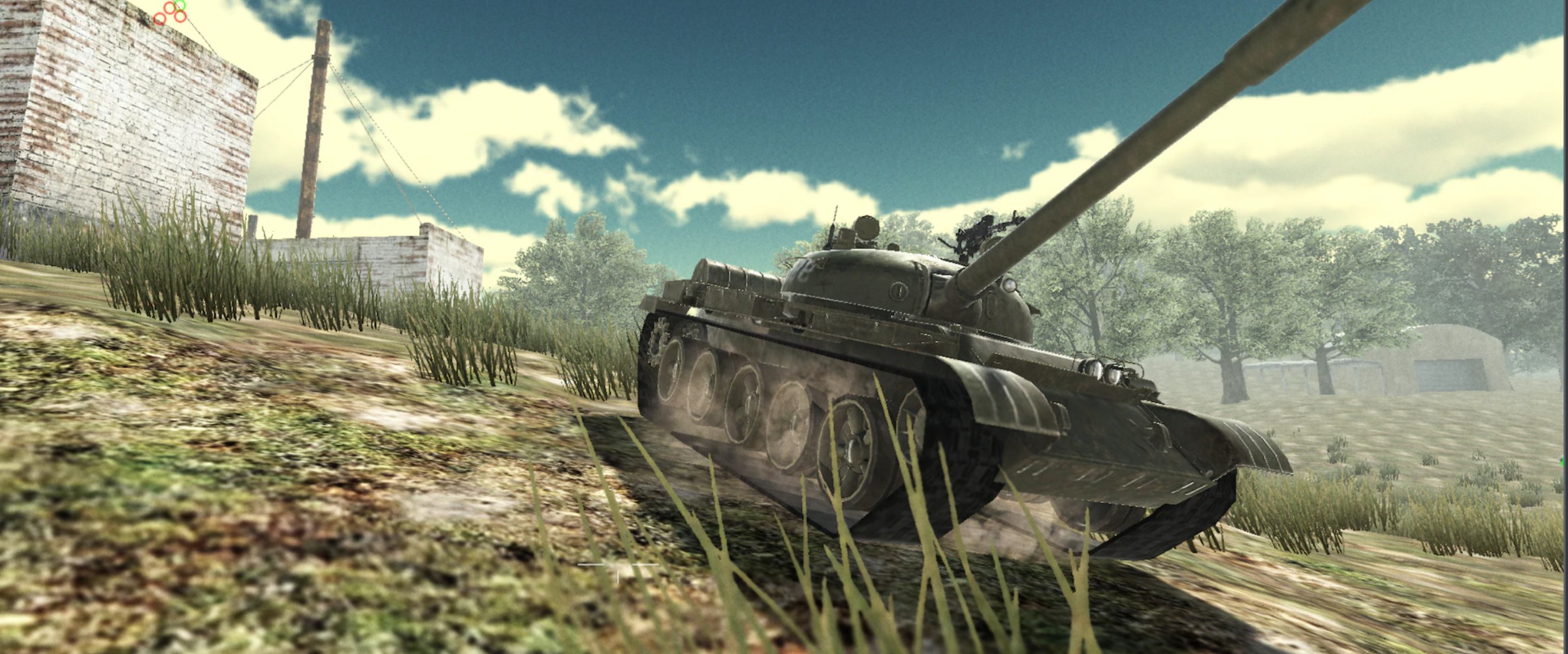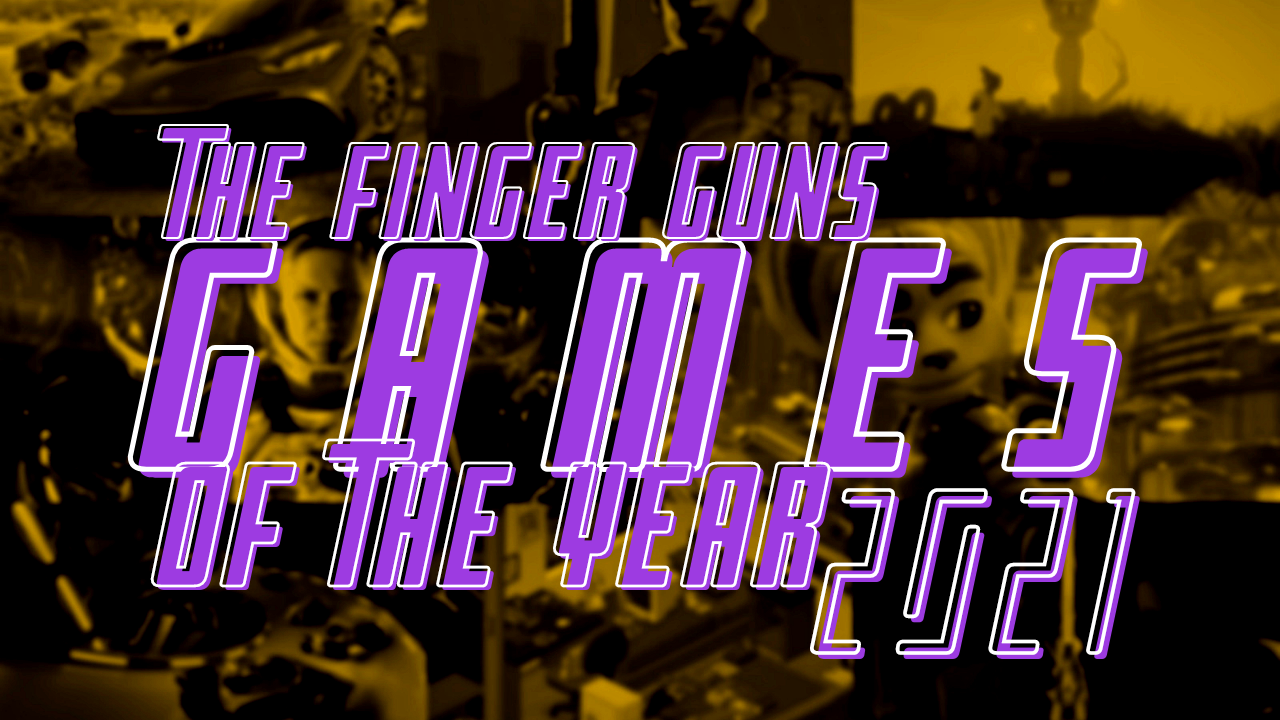Song of Horror Review (PS4) – Tune In To The Horror
Over the last few decades we’ve seen so many Resident Evil revisions and Silent Hill shenanigans, it’s hard to take anything new as a credible “threat” to the horror genre. Even my initial thought to the Song of Horror trailer was, “Ah, they’re going for the homage route”.
In fairness, it did just look like it was trying to cash in on that old fixed camera, scavenger hunt/logic puzzle formula that the aforementioned brought into the mainstream. Yet while it does have that (sort of), it also brings much, much more to the table. Featuring a story cribbed from the likes of Lovecraft, In the Mouth of Madness and, to an extent, Evil Dead, Song of Horror took me for a ride.
I thought I’d be desensitised to horror games in terms of what to expect. But much like Visage certainly scared and surprised me, so did this. So much so, that I’m about to tell you why it’s one of the best horrors I’ve ever played (without hyperbole). Prepare yourself, it’s going to get dark and elaborate…
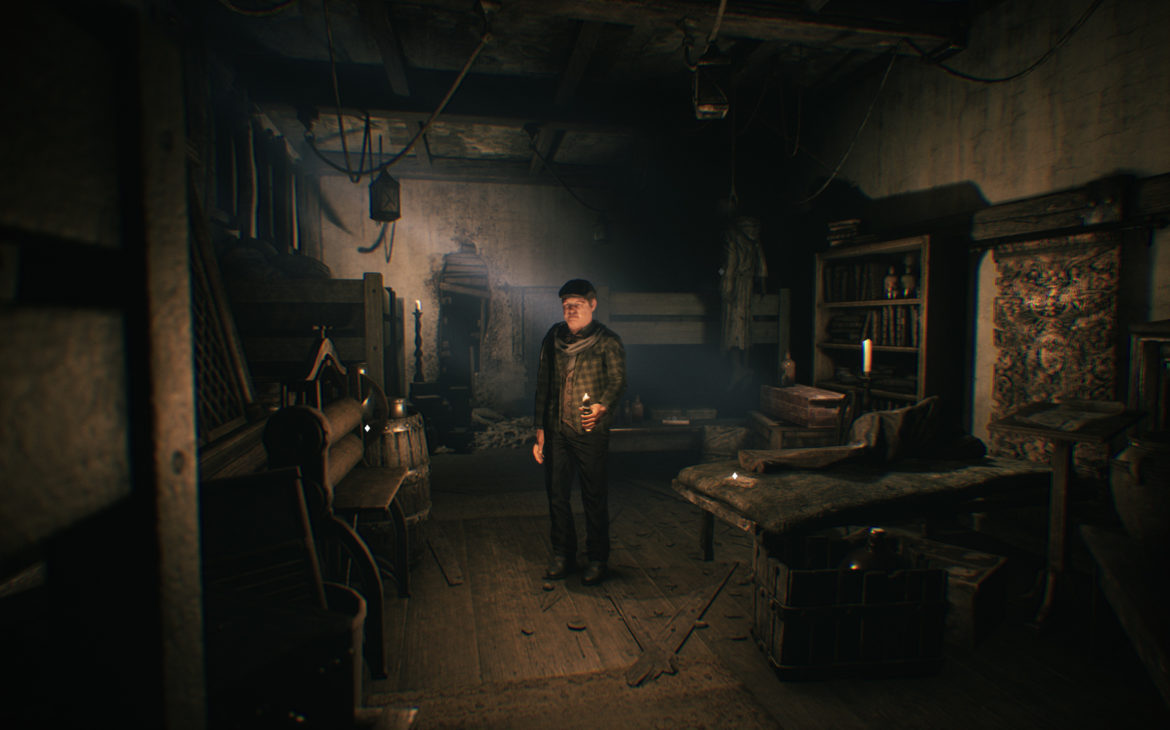
It’s Always a Spooky Box…
Before I get into why this game is one of my surprise favourites of the year, we’ll look at the framing device for the story. Now, the game is called Song of Horror. Whilst that could lead to speculation about what it means, whether it be the call of something ancient and otherwordly, this one is instead rather on the nose.
The events preceding the game are standard fare: acclaimed author Sebastian P. Husher acquires a mysterious music box from antiquities salesman, Isaac Farber. But of course, rather than have a pop up ballerina and a tinny rendition of a piece of classical music, it unleashes eldritch horrors. You’d hate to make that mistake if you’d bought it for your niece’s birthday.
Husher and family subsequently go quiet, presumed missing, and naturally concerned parties become more concerned. The prologue sees Husher’s publisher, Etienne Bertrand, send his assistant Daniel to the author’s house. The lights are on but nobody’s home, in a literal sense, as Daniel cautiously explores some of the building. It’s not long until he enters a room he shouldn’t have, sealing his fate as dark horrors torment him… or so it seems.
This sets up the main game, in which you pick one of four characters to look for the man who was looking for the man. At first, my scepticism was all, “Am I going to be exploring the same house four times to get it all done?” and I was wrong. Song of Horror is episodic, and Husher’s house is just the first one of five. There are a total of thirteen playable characters, and there is an incentive for replaying episodes with different people. And permadeath.
But before we look at them, let’s look at the what makes it scary first.
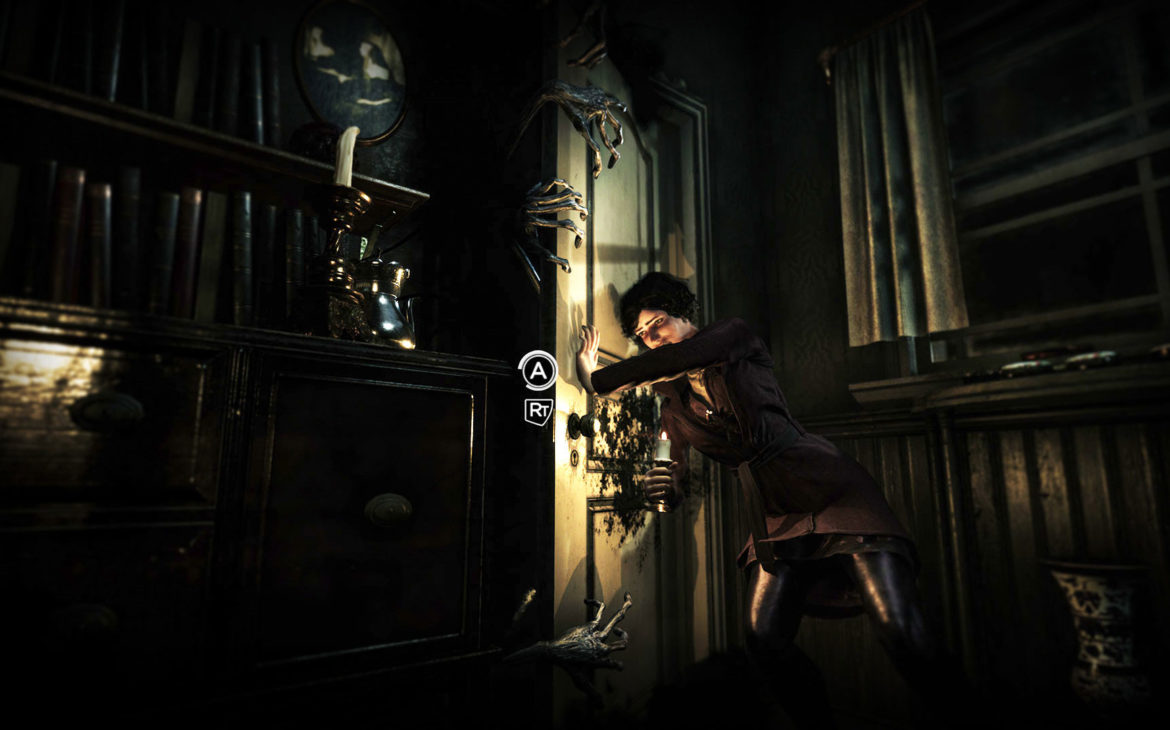
Several Residences of Evil
To really explain what makes Song of Horror great, it needs to be broken down into two parts: the gameplay and the horror. The gameplay will be familiar to anyone that’s ever played a Resident Evil or Silent Hill in their early inceptions. Which makes sense, as the game is set in 1998, the golden year of survival horror. Yet unlike Daymare 1998’s poor attempt, this one actually sticks the landing in terms of homage.
If you’re not familiar with the classics of early PlayStation horrors, allow me to explain: they popularised the concept of “fixed camera” gaming. Yes, I know Alone in the Dark had done it prior, but which of those three series is still relevant today…? Anyway, this game has that too, to a degree. The camera isn’t completely static, at times lowering from up high to a Dutch angle as you walk towards it down a corridor. So whilst not without modern trappings (for the better), Song does faithfully recreate the poorly lit and hard to see styles of its predecessors.
Which, in turn, is where the use of light and exploration comes in to play. Each character has a light source, be it a lighter, candle or torch. In conjunction with the right analogue stick, players can aim these light sources at objects and contextual interactive icons. Rather than an item flashing the moment you walk into the room, it will instead reflect once you’ve hit it with some light. So the impetus, then, is to fully explore your surroundings.
Given that this is an “old fashioned” style of horror/adventure, you will be doing that a lot. Whether it be Husher’s large-yet-cramped house, Farber’s antiques shop or otherwise, exploration is key. Utilising a map system similar to Silent Hill, you’ll be backtracking and checking what doors were previously locked. Whilst some of the puzzles do require some very lateral thinking, it was fun to go back to that classic style of gaming. There is no hand-holding here.
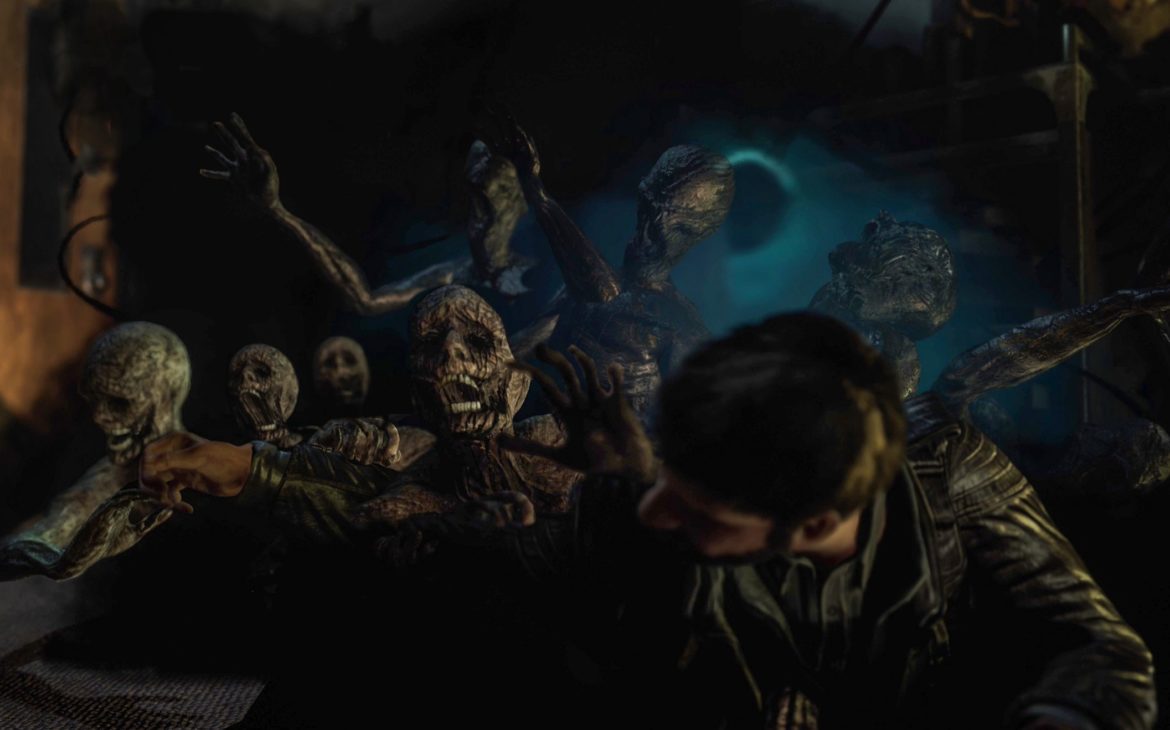
The Abyss Doesn’t Just Stare… It Grabs
Of course, it’s all well and good setting the scene for a horror game. It’s whether the game can deliver on the horror itself that makes or breaks it. Now, I also now horror is subjective, so what makes me scared may barely pass muster with some. But from my own subjective view, this game scares the shit out of me.
Unlike the aforementioned, there is no combat to be found here. Instead, Song of Horror goes for the modern stylings of defenceless terror and hiding from things. Much like why I love/hate Alien: Isolation and Visage, it’s that kind of horror that makes me uncomfortable. That’s all down to the looming presence haunting up the joint(s). Well, Presence with a capital.
Much as I’m loathe to give that introverted racist any credence, this game does rely heavily on the “Lovecraftian influence” that gets oft-touted in modern horror games. The Presence is lurking, always finding ways to catch you unawares or back players into corners so there’s no escape. You can be walking down a corridor and the lights will flicker. Alright, that may seem tame, but then the game doubles down and knocks furniture about when you think you’ve calmed down.
There are set battles against The Presence, which I’ll get into, but the overall feeling is one of unease. The music reminds me of Goldsmith’s Alien or Fiedel’s Terminator scores: moments of calm punctuated with sharp strings to catch you off guard. At one point, I’d thought I’d try playing with headphones on for immersion. It was short lived, if that gives you any indication as to its effectiveness.
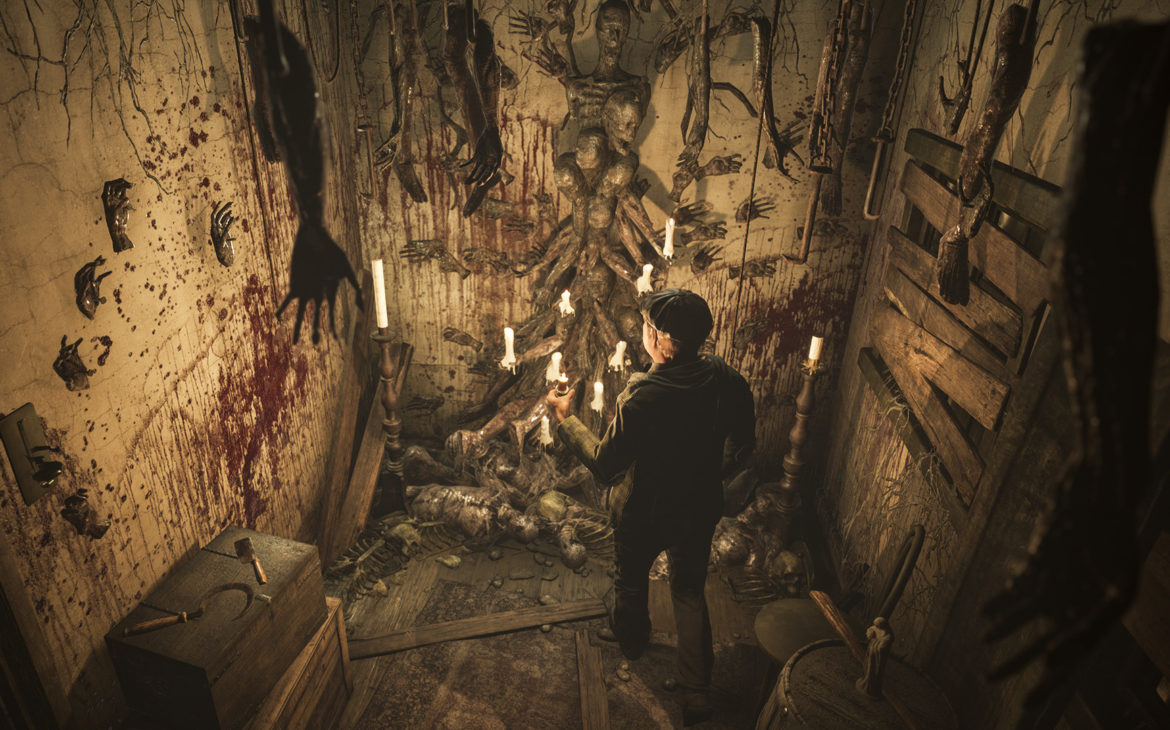
Don’t You Open That Trapped Door…
I could have just written the above section on the horror and called it a day, but that’d be selling it short. There is much more at play here, very much on a psychological level. It’s all well and good with things that make you jump outwardly, but what about the internal stress?
So, that permadeath I mentioned earlier. That plays an important part (unless you lower the difficulty) in both episode and story outcome. Should one of the four characters in that episode get caught unawares, they will die. If all four die, you have to restart the entire episode. Which did happen to me, in the first episode, right at the very end. Many swears were uttered.
My first death, the Russian housekeeper, died because we (my friend Meg and I share-played it) thought we’d beaten the horror back from behind a door. Then proceeded to open said door, got snuffed out. The second, Etienne, died because I failed to listen in to a room first that had The Presence in it, and subsequently died. The third, and by this point by nerves were frayed, died because she saw Etienne stood crying a corridor. Only it wasn’t him, as I found out when it insta-killed me.
That’s just episode one and only three characters (the fourth died because I failed to calm myself under a table). By this stage, I’m already dreading carrying on. But in the interests of morbid curiosity and journalistic integrity, I had to. I wanted to see how this played out, and what brought these people together.
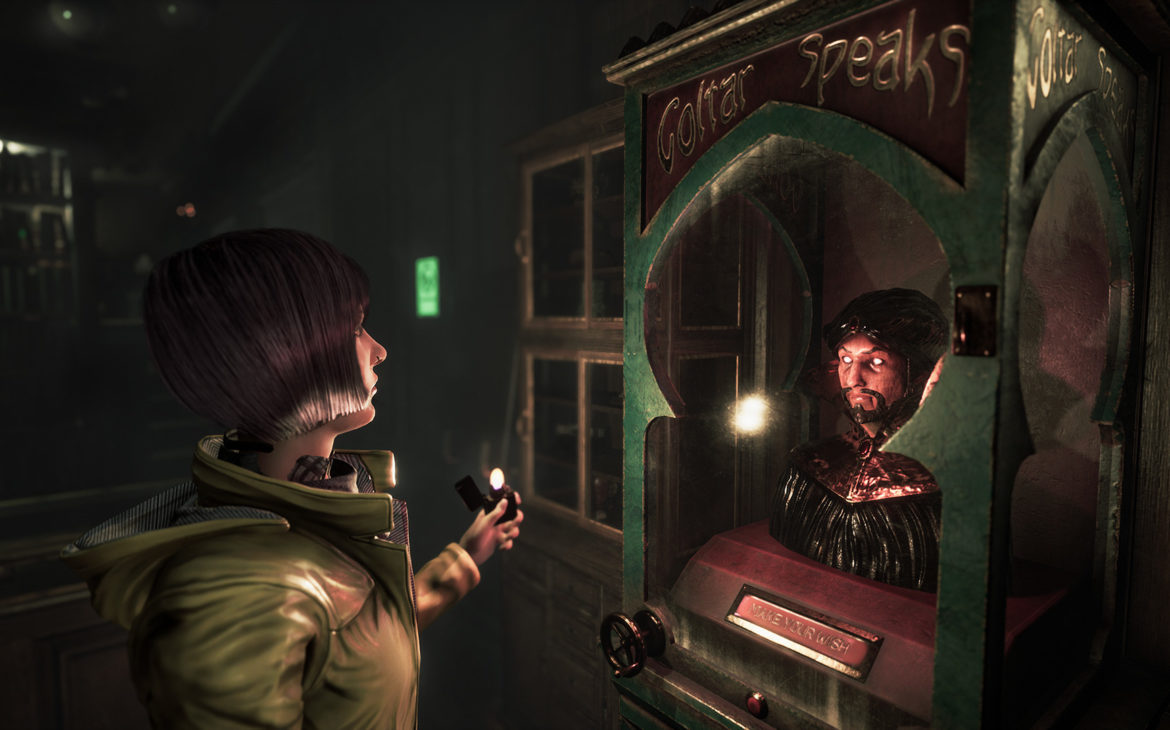
A Publisher, a Wife and a Technician Walk Into a House
When presented with the character selection in episode one, as I say, I was sceptical. My initial thought was of some bizarre, Resident Evil Outbreak multiplayer gimmick. The scepticism then extended to, “Why do they all have varying stats?” like it would make a difference. Well, you may be surprised to learn that it does.
That snark I made at the start about having to play through with each one has some truth to it, but not as a negative. You see, each character brings something different to proceedings. Had Alexander, the Russian, not died I may have been able to understand a journal in Russian says later on. Sophie, Daniel’s wife, can leave candles around certain Presence hotspots for a bit of a safety net. Alina has high stealth, which sounds daft on paper. But this translates to being detected less often by the persistent presence of, uh, The Presence.
But it’s more than just who has the best stats, there’s an involvement each one brings too. Etienne, for example, knows the Husher’s and is familiar with objects in the house. Episode two lets players pick Farber’s daughter, Erica, who has some familiarity with the shop the episode is in. These may only be face value interactions, but it left me curious as to how each one plays out. And yes, there are relevant achievements/trophies to entice the curiosity out of gamers.
There’s a recurring character (that I won’t spoil whom) that players will have an investment in keeping alive, should they pick them. However, the hardest part is keeping them alive in the first place. For you see, Song of Horror isn’t just the odd Quick Time Event here or there. Oh no, it is more…
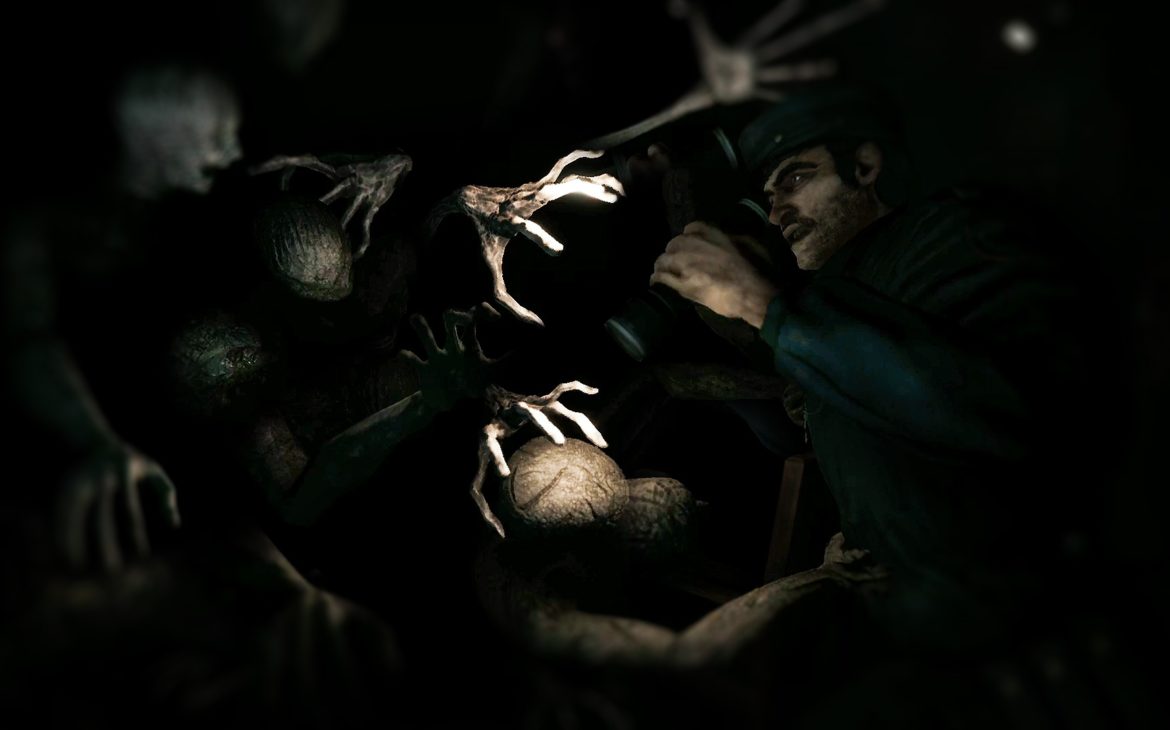
Are You Afraid of the Dark…?
Okay, I slightly lied. There are QTE’s in here. But they’re not your usual Shenmue/Resident Evil 4 standard of “Press X at appropriate time to dodge something”, thankfully. They are more contextual and definitely more unnerving. This is down to knowing that if you fail, you’re not getting scalded by some old kung fu master. If this character fails, they die.
Players could be exploring a room, and without warning, The Presence could be trying to get in. One of two things can happen: you can either charge the door it’s coming through, or find somewhere to hide. The former will see you engage in a button-mash QTE to keep them out, whilst the former has you hide. Whether you find a cupboard or table to hide in/under, another QTE has players time trigger presses with heartbeats. This is to calm down whichever character, some more resilient than others, is hiding and not be noticed by the horrors.
Later enemies are introduced that are blind but detect sound. Which means another rhythm QTE of sorts, that has you regulate breathing so you don’t cough or splutter, resulting in a permadeath. It’s because these events are so few and far between, or at least randomised so it’s not every room you go into, that it keeps you on your toes. Dead Space gets boring as you know any corpse on the floor or unbroken vent is probably a trap.
Song of Horror, meanwhile, mixes its scares up so that it’s never predictable. And that, ladies and gentlemen, is why I love what it’s doing. Except that I also hate it because it scares me so.
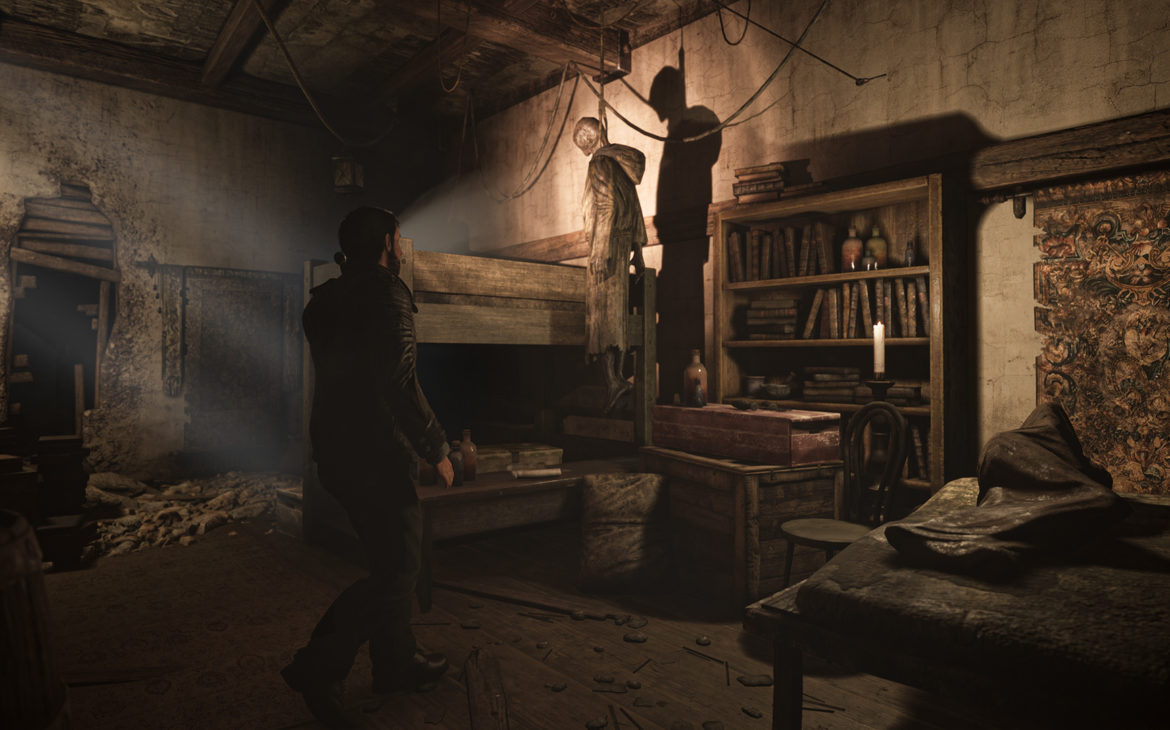
The Brown Note
Whilst I am very much praising every other aspect of the game here, there are a couple of negatives that need addressing. But, and I mean this wholeheartedly, they do not detract from the experience. They’re just too obvious to not be pointed out.
Firstly, the colour palette. Whilst it’s a very good looking game, considering it’s not AAA, the overall tone is very, very brown. I had to turn off chromatic aberration and film blur to get the best looking experience, but there’s a very overall hue of beige across the board. Like someone’s left the sepia filter on and it’s saturated the entire game. It’s not terrible, but it’s not a colour that screams horror environs at me.
The other is the voice acting. Again, there’s no celebrity talent here so I’m not experiencing Patrick Stewart levels of oration. It’s just the accents that are off-putting. If you want British or Russian accents, either hire those nationalities or at least listen to casting auditions prior. Now, I’m British, but I don’t think I’ve ever said, “Cor blimey” in a normal manner. However, it feels like whoever did the British accents watched Snatch and thought, “Yep, that’s the stereotype I’m going for: all of them”. You do get used to it, but it just feels like you’re playing an American’s idea of what British or Russians sound like.
The only other grumble can be the tank-like controls being a bit wonky on camera changes, but again, you adapt. Or that there are, at times, too many items to interact with. I can see the books on the shelf. I don’t need a contextual prompt telling me “…there are books on the shelf”.
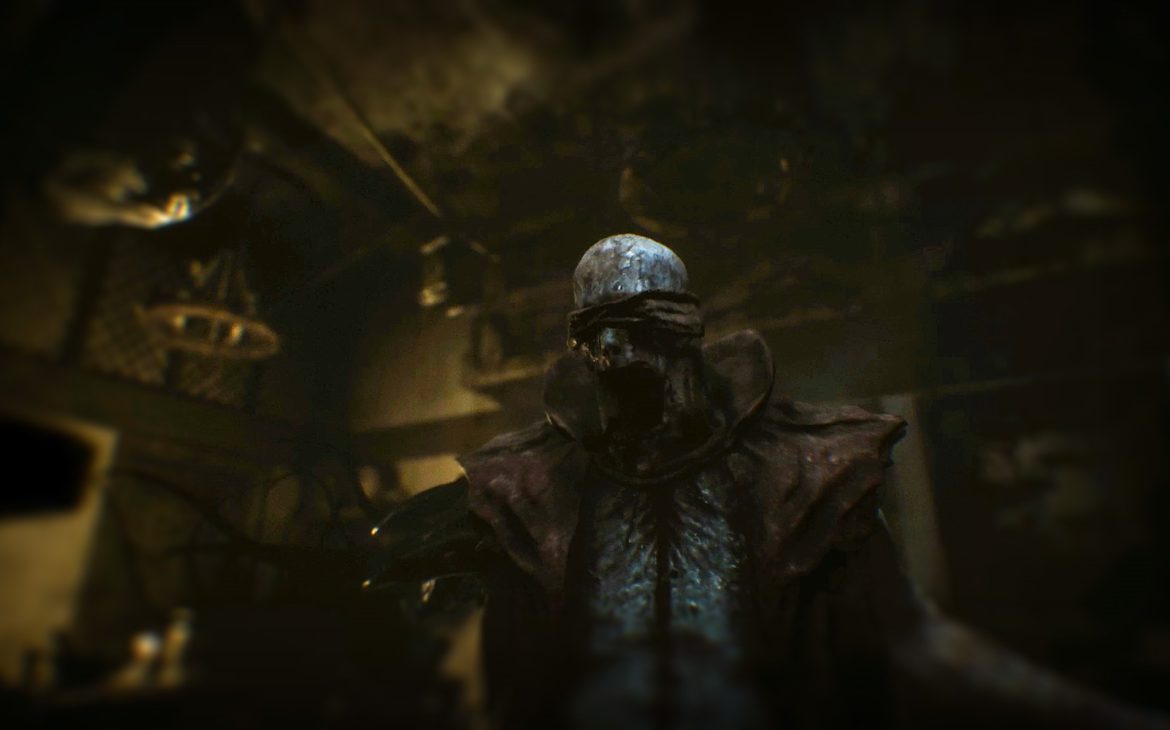
Play It Loud
I went into Song of Horror blind. Barring the trailer that I saw a few months before we got code, I wasn’t aware of it. Didn’t even know it’d be on PC a year prior, albeit drip-fed with episodes. So I had nothing to temper my expectations, good or bad, to. Thankfully, this is the complete version, so you can consider it one whole game.
The thing is, when I started the game, I thought it was a bit naff. The voice acting, the somewhat cliched framing device, Daniel’s torch clipping through his had… I wasn’t sold. It’s only after I knuckled down, and had to restart episode one, that I saw the magic unfolding.
Be this homage or evolution, it’s hard to quantify. Personally, I’d call it both: an homage to the glory days whilst taking that template and improving it. I’ve not finished it yet (due to time constraints) but I genuinely want to. I am invested, even if it is destroying my sanity at an alarming rate. I want to see what happens, why this mysterious music box has dark fantasies from The House on Haunted Hill pulling me through doors.
So this recommendation goes out twofold: if you like the classics, buy it. If you like modern horrors, buy it. If you like that combination of both, this will tick all the boxes for a third person horror game fan. Yes, it has a bit of rough around some of its edges, but honestly, the good so very much outweighs the few niggles of bad. Now if you’ll excuse me, I’ve got some unlucky individuals to keep alive.
Tapping into old school horror with several modern twists, Song of Horror is a surprise hit for fans of the genre. A few little face values issues do nothing to ruin the very well crafted filling, for fans and newcomers alike.

Song of Horror is available now on PlayStation 4 (reviewed on PS5), Xbox One and PC.
Developer: Protocol Games
Publisher: Raiser Games
Disclaimer: In order to complete this review, we were provided with a promotional copy of the game. For our full review policy, please go here.
If you enjoyed this article or any more of our content, please consider our Patreon.
Make sure to follow Finger Guns on our social channels –Twitter, Facebook, Twitch, Spotify or Apple Podcasts – to keep up to date on our news, reviews and features.

